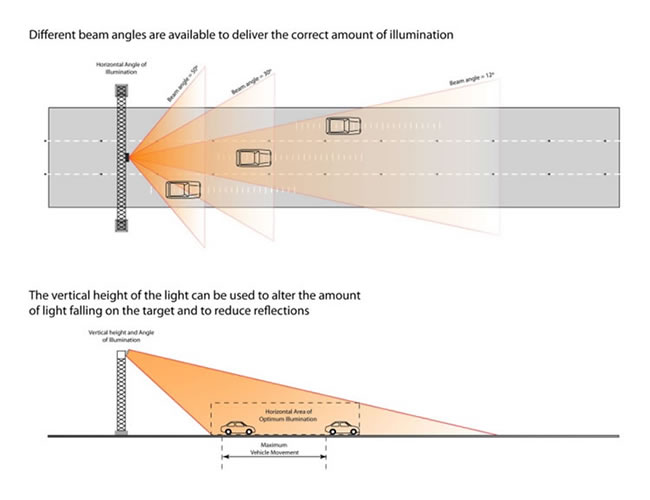Beam angles for ANPR / LPR illumination
When determining the geometry of a lighting system for number plate recognition, the critical parameter is how much light intensity arrives at the target area, which translates into an effort to maximise watts per square metre (w/m2). For a given light, as the beam angle increases the intensity at the target (w/m2) decreases.
It is important to optimise the beam angle, therefore. Beam angle is a product of optics design and is very important to lighting system performance. A well-defined beam reduces both wasted light and light pollution as well as energy consumption. In doing so it prolongs component life and reduces costs.

Since there is no real way to measure the 'edge' of light, beam angle (the angle at which light is emitted) should more correctly be termed and measured from where the light intensity is half of its fullest. The term for this is Full Width at Half Maximum (FWHM). Smaller beam angles will have a higher intensity than larger beam angles, which have a larger area.
As well as delivering optimised lens/diffuser combinations, Gardasoft's lighting products can also be mounted at any height or position in relation to the camera. Whilst this may seem an obvious statement, it is important to note that the lighting system need not always be situated with the camera itself, in many cases, it is better to position the light source away from the camera.
FWHM is a measure of the Beam Angle at a point where the light output is at 50% intensity.
Traffic technology White Paper
LED Traffic Strobe Lights - for high intensity ANPR and LPR applications

